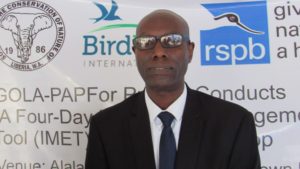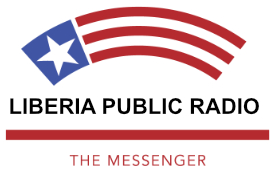
Liberia has launched the first ever technology platform to ensure the effective monitoring of threats in protected areas especially the Gola Forest National Park in Western Liberia.
The platform The effective management of the Liberia’s protected areas is important to the full conservation of the country’s biodiversity.
Conservationists and other stakeholder in Liberia have alarmed the continue threats been posed by intruders against protected areas that host some of the unique species in Liberia.
Several new tools and medium have been recently developed by conservation experts elsewhere to ensure that the full protection of protected areas and biodiversity but Liberia is yet to make good use of these important tools.
However, the need for effective monitoring tools to avoid further potential risks for protected areas cannot over emphasized. One of such tools is the Integrated Management Effectiveness Tool (IMET), which was introduced by the IUCN for effective Management of protected areas around the world.
To realize this Society for the conservation of Nature of Liberia (SCNL) with funding from the European Union (EU) through the Royal Society for the protection of Birds (RSPB) recently kicked a training to enable protected areas manager to effectively monitor and detect potential risk to the sector.
The training which is the first of its kind in Liberia according to SCNL Executive Director Michael, will take the country to another level on grounds that gab confronting the conservation sector is not only limited to the country alone.
Garbo added that IMET is the best tool that are been used by conservation experts around the world to manage protected areas.
“The tool is very good tool and we want all scientists working in the sector in Liberia to use it to track what is going on in protected,” Mr. Garbo adds.
“The IMET is the number-one conservation technology, currently being used across the world to manage conservation,” said Michael Garbo,
IMET, a good tool
Leonida Nzigiyimpa, a Ugandan IMET coach who facilitated training said the IMET helps protected area Managers to track and make proper decision about these protected areas. According to him, the tool has been used in other countries including Burundi to collect data about protected area management to improve situation there.

“We use IMET to mobilize resources to from partners and give information to decision-makers for quick intervention where protected areas are threatened”, Mr. Nzigiyimpa further stated.
New eye-opener
Liberia Forestry Development Authority’s Technical Manager for Conservation, Blamah A. Goll described IMET as a new eye-opener for Liberia and that it is not meant to put aside old ideas being used by those in the sector rather an addition.
“Don’t look at it as a new thing, but look at it as a plus to what you have been doing, because it will plan your programs properly to achieve your deliverables when it comes to sustaining conservation,” Mr. Goll told the trainees at the start of the 4-day training in Monrovia.
About IMET
He, at the same time maintained that IMET will not be used in one aspect of the protected areas, but to ensure that potential threats in the sectors turn into opportunities.
IMET is a Protected Area Management Effectiveness (PAME) tool that allows an in-depth assessment of marine and terrestrial protected areas, regardless of their management categories and governance type.
Also a decision support tool helps protected area managers take analysis-based management decisions for improved conservation outcomes.
The process is a software that can be downloaded free of charge on a PC, that does not require an internet connection while combining the analysis of the protected area surrounding environment with the internal management assessment to obtain a clearer understanding of the management context and challenges.
It encourages participatory assessment and decision-making process, building a collective understanding of how the management functions. It is helpful to develop or renew a work plan or a management plan.






















Comments are closed.